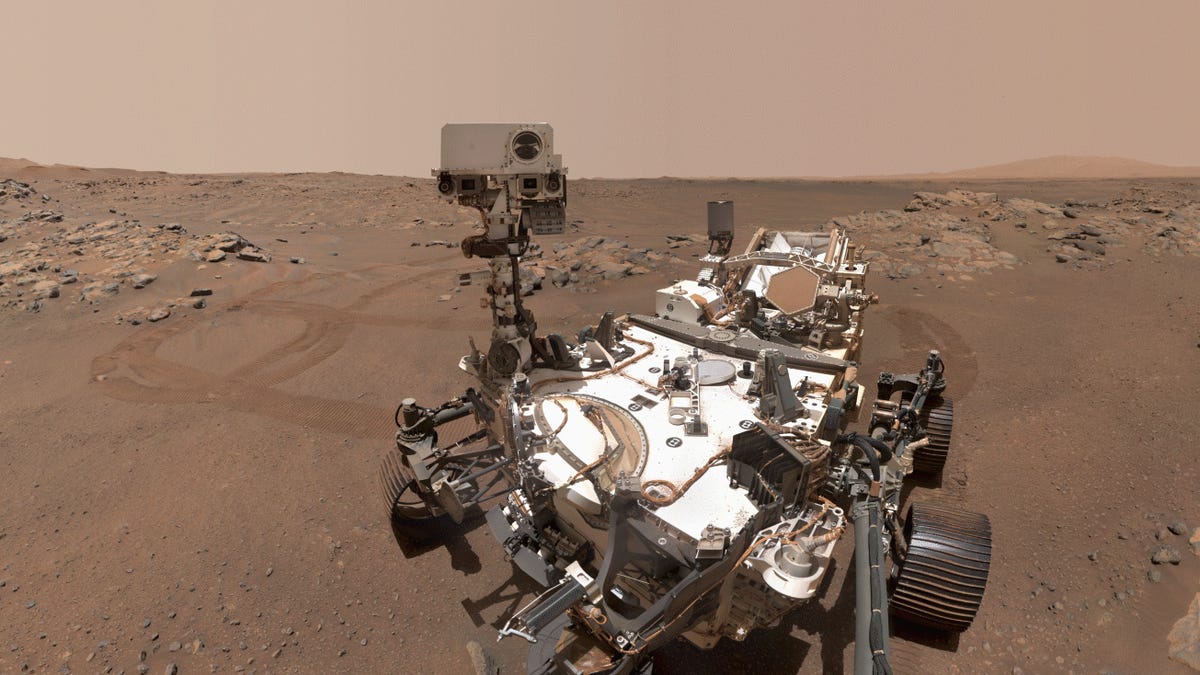NASA’s Osiris-Rex to Deliver Asteroid Sample to Earth on Sunday

Some dust and other bits of a big asteroid named Bennu are on the way to Earth. NASA’s Osiris-Rex is winding down its mission more than seven years after launching from Cape Canaveral, Florida.
The long flight ends on Sunday, when the spacecraft will jettison the capsule containing the asteroid sample. The capsule will then make a superheated trip through the atmosphere before parachuting in for a soft landing at the US military’s Utah Test and Training Range near Dugway, Utah.
In 2020, the van-size spacecraft performed a “touch-and-go” maneuver — sort of like a chest bump in space — and swiped a few ounces of material from the space rock, which is really a pile of rubble held together by its own gravity. Osiris-Rex lingered around Bennu until 2021, when it started its two-year journey back to Earth.
Mission controllers have been preparing for the capsule’s return for months now. On Sept. 10, NASA reported the spacecraft briefly fired its thrusters to point itself toward Earth. The minor adjustment puts Osiris-Rex on course to release the capsule on a trajectory to enter our atmosphere off the coast of California at 7:42 a.m. PT on the delivery. About 13 minutes later it will touch down southwest of Salt Lake City somewhere in a predetermined area measuring 36 miles by 8.5 miles across.
This graphic shows the events that happen between the time the Osiris-Rex spacecraft releases its sample capsule to the time the capsule lands in the Utah desert.
The capsule will sizzle as it races through the sky protected by a heat shield. It will be tracked with thermal imaging equipment, and recovery teams will be deployed by helicopter to snatch it as quickly as possible to avoid possible contamination from Earth’s environment.
Osiris-Rex is the first such mission led by NASA. Japan’s space agency sent two spacecraft, named Hayabusa and Hayabusa 2, to collect and deliver samples from asteroids Itokawa and Ryugu, respectively.
After landing, the sample will be sent to Johnson Space Center in Houston. There it will undergo preliminary analysis and be unveiled on Oct. 11 in a livestreamed news conference. It’s hoped the sample will provide scientists with a window into the birth of the solar system, including the sun and planets, some 4.5 billion years ago.
As for the main spacecraft, it isn’t done. After sending its treasure to the surface, Osiris-Rex will fire its engines to avoid smashing into the atmosphere itself. And it will continue on to its next target, the asteroid Apophis, at which point it will be rechristened Osiris-Apex (Osiris-Apophis Explorer). The vehicle isn’t equipped to collect and deliver another sample, but it may try to blast the asteroid with its gas thrusters in an attempt to dislodge dust and other small bits for study.
Apophis is an important target because it’s considered a potentially hazardous asteroid. While any chance of it impacting Earth in the next century has been ruled out, it will be worth keeping a close eye on for centuries to come.
Source: CNET















